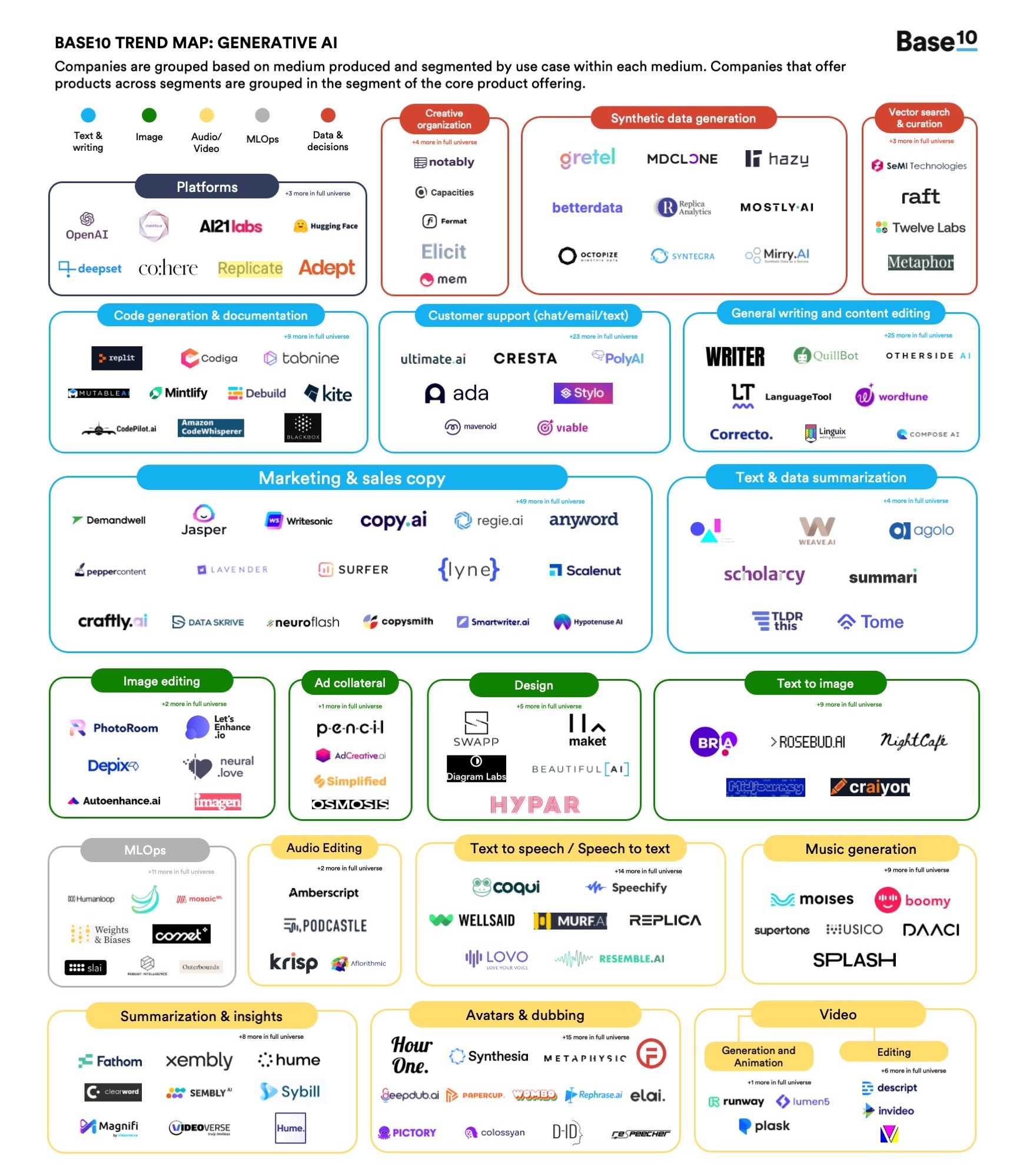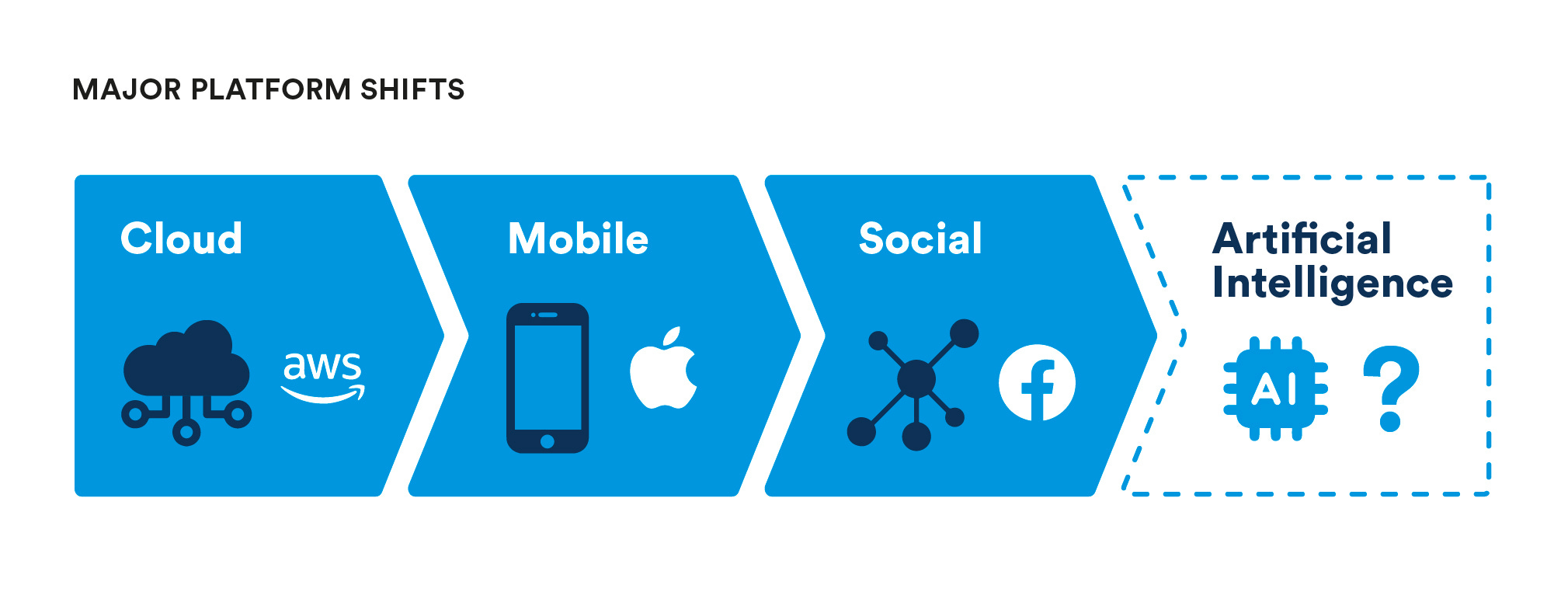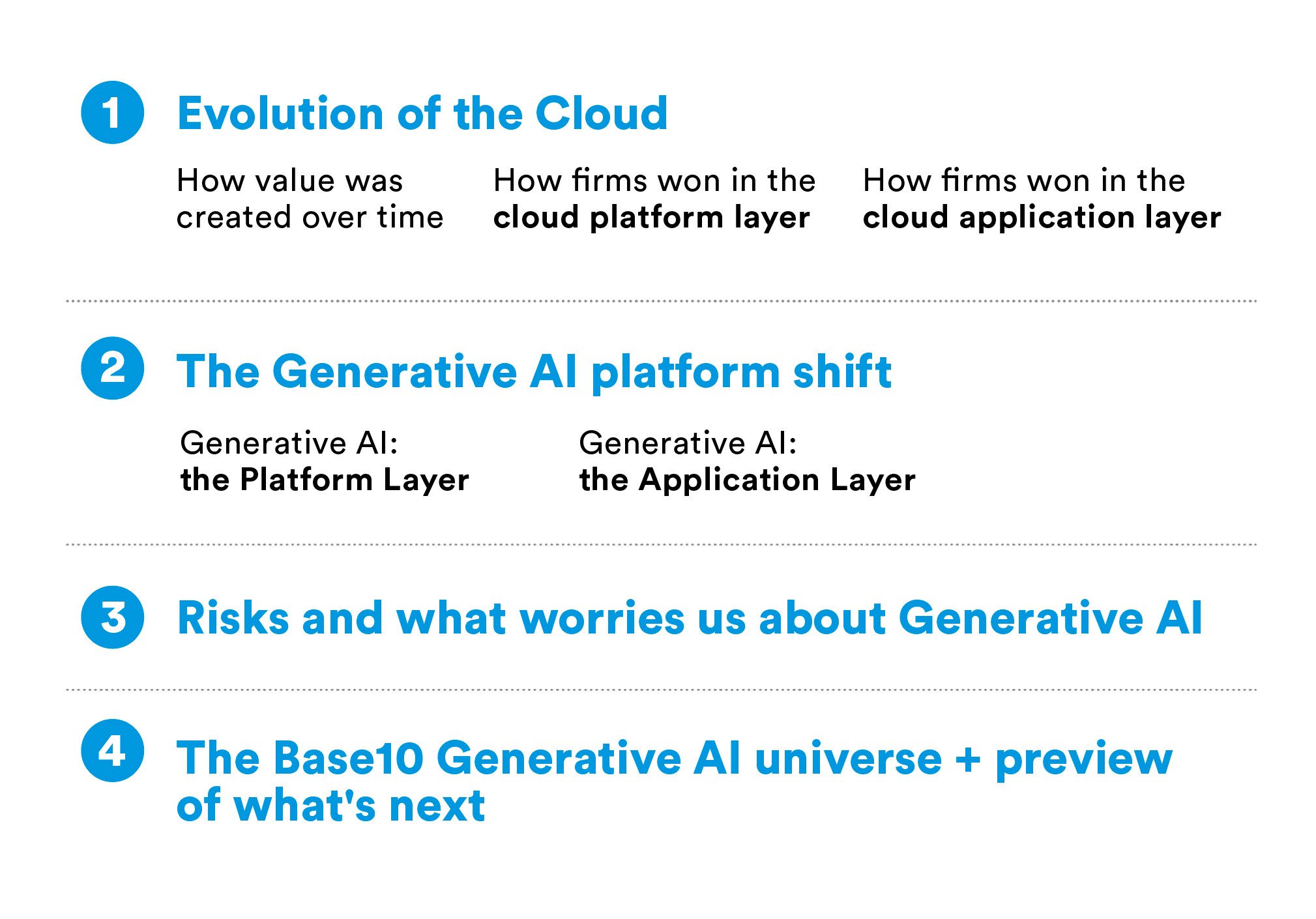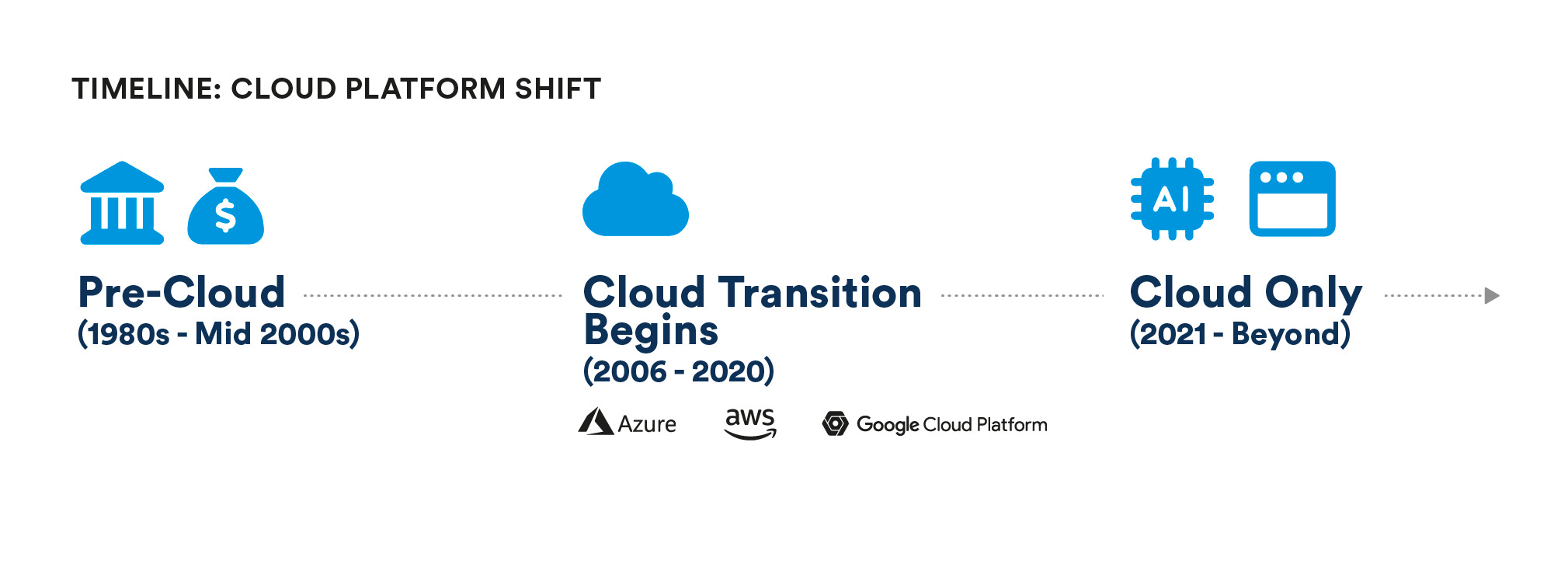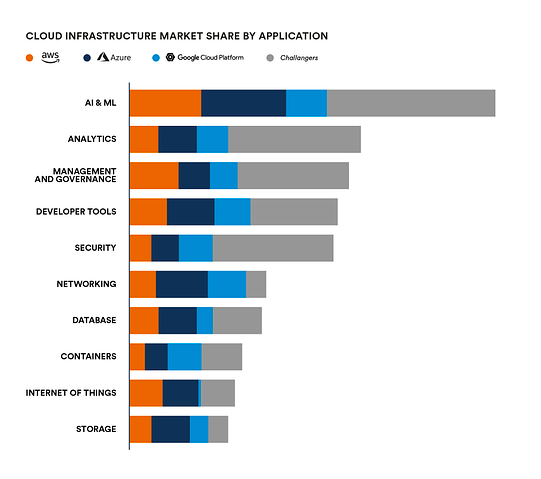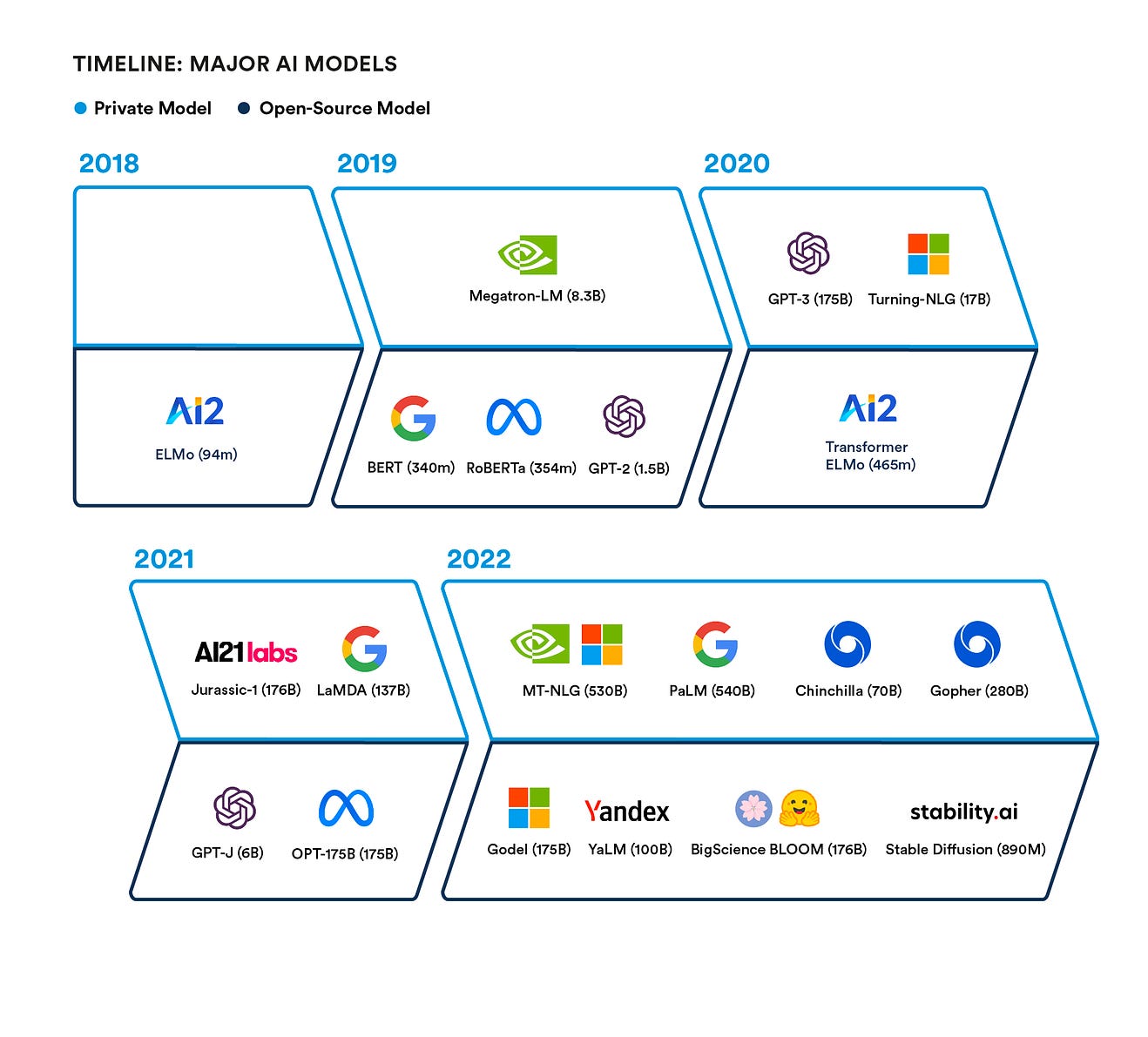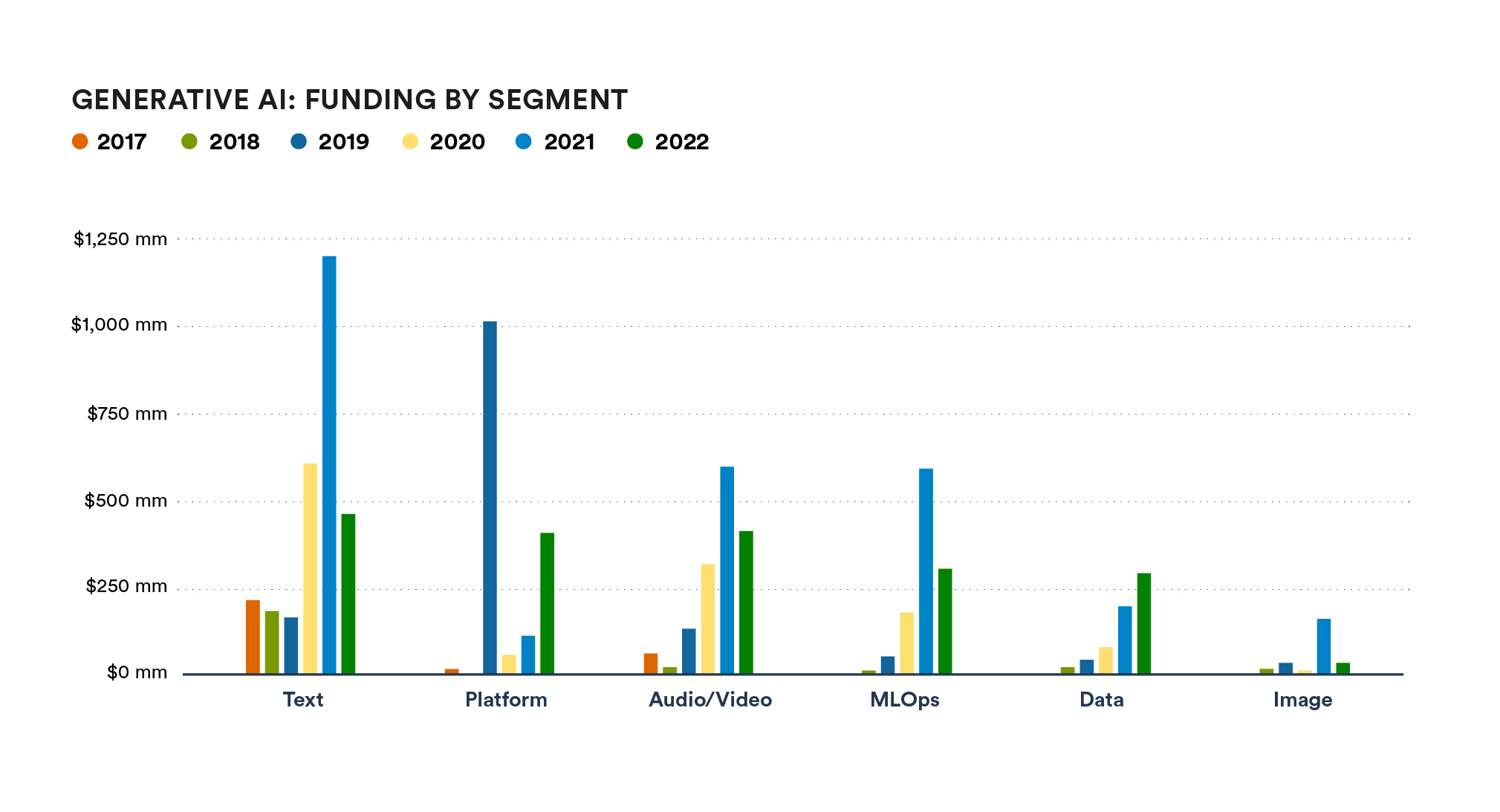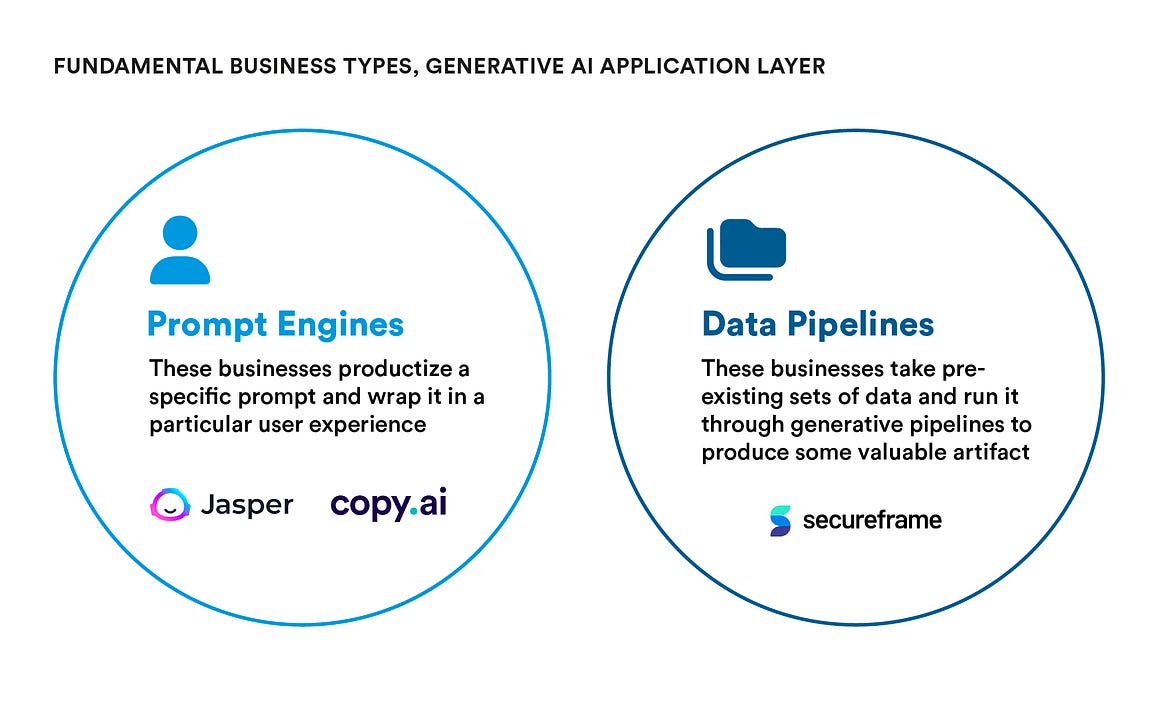If You’re Not First, You’re Last: How AI Becomes Mission Critical
If You’re Not First, You’re Last: How AI Becomes Mission CriticalThe AI platform shift, led by generative AI, will create as much value as the cloud platform shift, completely changing the broader knowledge economy.Our research articles are moving to a new home! To read the full article and view the full universe of companies, visit the Base10 website. Members of Base10 started building businesses using NLP and machine learning back in 2009. Paradoxically, building AI businesses made us remarkably bearish on the near term potential of artificial intelligence. But, we’ve spent the last year studying generative AI and have met with an onslaught of startups making us seriously question these embedded biases. Founders are deploying complex foundational models against real-world problems that are creating new software applications and fundamentally changing the way old industries work. This is what we refer to as “Automation for the Real Economy,” solving problems for the 99%. When Base10 made its debut in 2018, our managing partner Ade Ajao wrote: “AI is just a tool in the path to automation and, like any tool, its effectiveness depends on who uses it and whether it is used wisely.” What we’ve learned suggests that Artificial Intelligence will be the next platform shift–following cloud, social, and mobile–and is in 2022 where Cloud was in 2006-07, with Generative AI leading the rapid charge. We’ve been using our in-house models (shoutout Base11!) for years to build and prioritize universes of startups in promising trends; our Generative AI universe has over 300 companies, and you can see the full universe on our website along with a condensed market map below across emerging segments. As shown above, Generative AI’s applications touch a variety of end users. Take for example Elaine, a designer charged with creating ad collateral for a demand gen team that spends $390k monthly on display ads for an insurance broker. Elaine’s company just pared down the entire marketing team to only mission-critical FTEs, including herself, in hopes of focusing more budget on ad spend instead of headcount. In a world prior to the sophisticated applications we’re seeing in the Image Generation segment of this market, producing a range of unique assets in the specs required for a full display campaign would be nearly impossible as an individual designer. With the tools in this market, Elaine and so many like her can confidently leverage AI to make better use of their time, make their budgets stretch further, and A/B test assets at the rate of a much bigger team. We are not hype investors, so it feels a bit antithetical to the firm ethos to be writing this when recent Generative AI investment multiples suggest we are at peak Gartner hype. We actually expect the “trough of disillusionment” to be shallower than usual, which means the plateau of productivity is quickly approaching for AI and generative AI, in particular; we expect improvements to be exponential and power a transformative platform shift, reinventing the way Elaine and so many like her work. We believe the AI platform shift will create as much value as the cloud platform shift, completely changing the broader knowledge economy and getting us closer to unlocking the potential of The World’s Brain. The Next Platform Shift?At Base10, when we see an emerging technology start to reach productive levels, we immediately start asking ourselves three questions around value, moats, and mission criticality:
To develop some hypotheses around these questions, we looked back at other platform shifts from the last 20 years – cloud, mobile, and social– for lessons: The platform layer powering generative AI is most similar today to the early Cloud platform shift led by AWS in 2007. Let’s take a look at what we can learn from this evolution. Anatomy of a Platform shift: Evolution of the Cloud ☁️The Cloud platform shift can be understood in three main phases: Pre-Cloud, Cloud-Transition, and Cloud-Only. Pre-Cloud (1980s - Mid 2000s): Companies relied on data centers of limited scale, curbing the speed and flexibility of deployment. High upfront costs, deep expertise, long-term capacity and capital planning were required and thus, forming an internet business was substantially more expensive. Innovation and company formation were constrained and only accessible to networks with access to capital. Cloud Transition (2006 - 2020): When Amazon tried to monetize cyclicality in the retail market, what emerged was a consolidation of large data centers and the first iteration of AWS. They made this service publicly available to developers and Google Cloud and Microsoft Azure followed suit, kicking off a wave of cloud-only companies. Cloud Only (2021 - Beyond): Cloud is now optimized for a wide range of business use cases and services. The platform shift unlocked Software-as-a-Service, a fundamentally new business model, with new approaches to pricing and delivering value to customers. How was value created and accrued?The Cloud transition meant companies could outsource a previously slow, expensive, but critical, component and get speed, security, and massive scale. Specialized providers took on the reliability, optimization, and security of these systems so companies could focus on innovating and building instead of maintaining infrastructure. Scaling infrastructure quickly became a non-issue. Need more usage? Just flip a switch. The result is a platform with over $200B in value, growing 30% YoY in 2022. A couple points stick out to us about how defensibility and mission criticality emerged for Cloud:
What does the platform shift to Cloud suggest for the Generative AI platform shift?To begin, Generative AI is really the layering of two remarkably powerful platform shifts as AI/ML is the main use for cloud computing infrastructure today: Until late 2021, we were in the “Pre-Cloud” era of generative AI, but some of the most powerful AI models to ever exist have been created in the last ~5 years and the next five years will be similar to the cloud transition period between 2006-2011: The stakes are high with the generative AI platform shiftThe ability to build a generative AI business without needing to invest significant dollars developing sophisticated models sounds an awful lot like the story of the cloud transition described above. Access to private APIs and open source models significantly reduce (and even eliminate) the upfront costs previously associated with building an AI business. Just as cloud accelerated development speed, companies like OpenAI speed up deployment. Because of this acceleration, we expect to see the fastest companies to $100M and to $1B in revenues in this category (e.g. $100M in 12 months, $1B in 3-5 years). More importantly, generative AI has the potential to drive the engine of The World’s Brain—a giant thinking machine that could be used to solve humanity’s greatest problems. At optimal efficiency, that's 7.6 billion people processing data 24/7, drawing from the accumulated wisdom of 6,000 years of civilization, with the ability to look at any given problem from as many perspectives as there are people. By our calculations, the World’s Brain is only at 4-6% capacity. Generative AI may just be the engine to help us capture the outstanding >90%. Look out for a winner-take-most market in the generative AI platform layerThe Artificial Intelligence market today is $330B, growing to $1.4T by 2029. Like cloud, the generative AI platform will have significant returns to scale. Building high quality foundational models requires 1) technical talent (e.g., researchers and data scientists), 2) large data sets (the larger the better), 3) data filtering and data quality, and 4) human and model feedback to improve new models. First-movers gain early advantages across all four of these—another case of move first and don’t mess it up. Because of this, we expect this will be a winner take most market with 2-3 scaled players taking 65-70% of the market. OpenAI, Stability AI and Hugging Face have demonstrated strong early mover advantages. We are curious to see who will emerge as the AWS of AI, between closed source and open source players, but ultimately, that will be determined by who builds the most defensible product. Stickiness and defensibility will be challenged for individual modelsFurther like cloud, the market will grow dramatically over the next decade as models become more robust, but pricing should decrease and become commoditized over time (though that remains to be seen with the current energy pricing surge and impact on compute costs). But unlike cloud, most generative AI businesses are building back-ends that can plug in and out of various models - so the high switching costs that drove value accrual in cloud aren’t as pronounced in generative AI. Platform players will not hold the leverage over customers that they do for cloud, which means stickiness and defensibility is still a question. We think multimodal models, which combine modalities (e.g., understanding text, video, audio, and images) are in the near future and will be game changers for stickiness and defensibility. Another way to drive stickiness may be in a fundamental layer of security that is not as pronounced in cloud: ethics. Unlike in Cloud, no one discusses AI without also foreshadowing a potential doomsday scenario and the ethical oversight required to avoid it. Will the most “ethical” models win? We see both closed API and open source actors making various arguments as to why their model is most ethical, but much remains to be debated about how customers will value ethics. But the generative AI platform layer is already mission criticalThe platform layer for Generative AI is already becoming mission-critical for modern businesses. If there were still questions about whether this is real or this trend is compelling, we can just take a look at product adoption and interest in the platform and application layers of generative AI businesses. Early movers in text and writing have already amassed millions of users. As a proxy, take a look at the web traffic data for a few players in the platform and application layers and not the acceleration just in the last year alone. Further, our internal research and investing ML models have discovered an ~130% increase in capital flowing to generative AI businesses across our market map between 2019-2021. Unsurprisingly this has been driven by +630% growth for Text & Writing, +400% for Image, +370% for Data, and +350% for Audio/Video. We will soon have a generation of scaled businesses built on these LLMs. But the mission criticality of individual models will remain a question as businesses will build for flexibility and move with ease to providers with the newest, lightest, and best models. Generative AI is unleashing new business models and transforming old businessesOur first observation is that existing businesses have been quick to unlock additional value by offering Generative AI-powered tooling to customers. For example, Secureframe, which joined the Base10 family in early 2020, recently added AI-powered auto-complete for RFPs to an existing product line which will save customers time completing questionnaires in sales processes. Another portfolio company, Notion, recently launched Notion AI to enable generative text and writing right in the app. But Generative AI is also novel businesses across text & writing, audio/video, image, and data. Furthest ahead, businesses in text & writing, like Jasper and Copy.AI are quickly reaching scale with large user bases and early enterprise use cases creating content, particularly for marketing and sales teams. "In an age of proliferating channels, marketing and sales teams are under tremendous pressure to meet increasing content demands," said Shane Orlick, president of the AI platform Jasper. "Generative AI can help these teams take a massive leap forward in the pace and quality of content production, getting them off the content hamster wheel and giving them space for creativity and strategy. We think this is a major accelerant to business growth." The generative AI application layer will be dominated by two business typesAs we’ve been learning about this space, we see two fundamental business types: Across both, early leaders are outperforming on execution and talent but there are some more promising signals of moats and defensibility that we are looking for as we meet with founders: In particular, we are excited to meet with companies that are finding ways to meet acute vertical pain points in a compelling way and nailing the workflows that keep customers in their tool the entire day or personalizing content based on the preferences, brands, or requests of the user. The journey to mission critical for the application layer is still earlyWe are early in the path to mission critical for generative AI applications. If we look at individual segments, such as marketing and sales copy, current products are in the long-tail of marketing spend, and customers don’t yet feel they absolutely need it to do their jobs. To become mission critical, AI applications must drive significant ROI. Taking lessons from the cloud, we challenge companies to consider how they might reinvent systems of record, engagement, and intelligence using LLMs. Winners will wedge into customers’ knowledge bases and create tooling that is essential to the most fundamental strategic decisions. High Risk, High Reward: What worries us about Generative AI (and why we’re still excited)With every trend we study, we think about how this innovation may impact the Real Economy. Since we invest to create value for the 99%, we are particularly worried about the ethical risks of displacing the 99%. There are many jobs that humans perform today that have not been accessible to software that will now be accessible via generative AI tooling. Our hope is that as the economy grows and value accrues, there is ample opportunity for generative AI to significantly augment humans, rather than displace them. Diversity, equity, and inclusion are also top of mind for us. Model bias is a serious concern and we are prioritizing meeting and partnering with generative AI teams that are taking a proactive approach to this challenge. Despite these risks, we are incredibly optimistic, especially about the power of generative AI to unlock the World’s Brain. It is early innings, but platform and application layers that take the lessons of the Cloud platform shift will be well positioned to quickly accelerate, scale, and fundamentally change the way humans imagine, think, and create. Look out for our next piece, where we’ll be taking a deeper look at the application layer and discussing some of the most innovative companies across the Text & Writing, Audio/Video, Image, and Data & Decisions segments. |
Older messages
The Rise of New Software Ecosystems
Tuesday, June 28, 2022
SaaS companies are leveraging ecosystems to extend their platforms' value—and entrepreneurs are racing to build businesses and capture a segment of the value these ecosystems are creating.
Accessible, Affordable, Acceptable: How COVID-19 Has Shaped Mental Health Care
Monday, April 26, 2021
COVID-19 has opened up untapped care channels for a variety of Americans seeking mental health treatment.
This Time Is Different: How Automation Can Win the Fight Against Climate Change
Monday, April 26, 2021
Entrepreneurs and investors who are actively building tools to help companies better manage ESG programs will drive enduring, climate positive change.
Giving everyone a voice: How technology is helping stakeholders better manage social and governance issues
Monday, April 26, 2021
Effectively managing social and governance-related initiatives is both increasingly complicated and critical, and companies are relying on a landscape of platforms to communicate truth and transparency
You Might Also Like
🔮 $320B investments by Meta, Amazon, & Google!
Friday, February 14, 2025
🧠 AI is exploding already!
✍🏼 Why founders are using Playbookz
Friday, February 14, 2025
Busy founders are using Playbookz build ultra profitable personal brands
Is AI going to help or hurt your SEO?
Friday, February 14, 2025
Everyone is talking about how AI is changing SEO, but what you should be asking is how you can change your SEO game with AI. Join me and my team on Tuesday, February 18, for a live webinar where we
Our marketing playbook revealed
Friday, February 14, 2025
Today's Guide to the Marketing Jungle from Social Media Examiner... Presented by social-media-marketing-world-logo It's National Cribbage Day, Reader... Don't get skunked! In today's
Connect one-on-one with programmatic marketing leaders
Friday, February 14, 2025
Enhanced networking at Digiday events
Outsmart Your SaaS Competitors with These SEO Strategies 🚀
Friday, February 14, 2025
SEO Tip #76
Temu and Shein's Dominance Is Over [Roundup]
Friday, February 14, 2025
Hey Reader, Is the removal of the de minimis threshold a win for e-commerce sellers? With Chinese marketplaces like Shein and Temu taking advantage of this threshold, does the removal mean consumers
"Agencies are dying."
Friday, February 14, 2025
What this means for your agency and how to navigate the shift ͏ ͏ ͏ ͏ ͏ ͏ ͏ ͏ ͏ ͏ ͏ ͏ ͏ ͏ ͏ ͏ ͏ ͏ ͏ ͏ ͏ ͏ ͏ ͏ ͏ ͏ ͏ ͏ ͏ ͏ ͏ ͏ ͏ ͏ ͏ ͏ ͏ ͏ ͏ ͏ ͏ ͏ ͏ ͏ ͏ ͏
Is GEO replacing SEO?
Friday, February 14, 2025
Generative Engine Optimization (GEO) is here, and Search Engine Optimization (SEO) is under threat. But what is GEO? What does it involve? And what is in store for businesses that rely on SEO to drive
🌁#87: Why DeepResearch Should Be Your New Hire
Friday, February 14, 2025
– this new agent from OpenAI is mind blowing and – I can't believe I say that – worth $200/month

